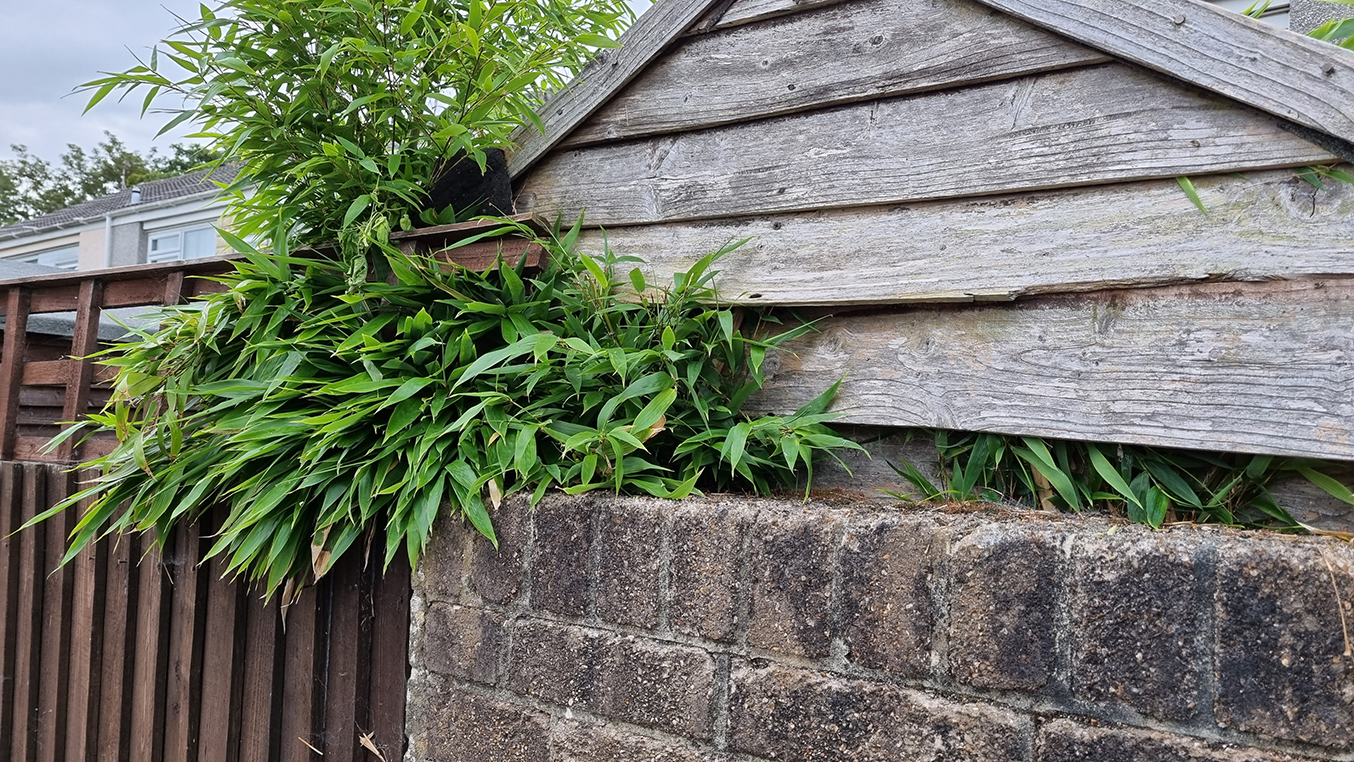
How to identify Bamboo species
The many species of Bamboo
Bamboo has over 1,200 species, which to an untrained eye makes it difficult to correctly identify what’s what. As we are aware, both the clumping and running kind, are non-native species to Europe. If not kept under control, bamboo can quickly transition from being a beautiful ornamental plant to an invasive problem.
Like Japanese knotweed, bamboo is spread through a rhizome system. Clumping bamboo remains as a large root ball, whereas running bamboo creates a long network of rhizomes that can spread up to 30ft, under fences and through existing structures.
Not all bamboo species will cause damage to structures, however even clumping type bamboo if left unmanaged will have the tendency to become invasive. In fact, the RHS state there are no types of non-invasive bamboo.
- ‘Running’– these have roots that spread out or ‘run’
- ‘Clumping’– is a better choice though all bamboo plants have large underground root systems.
Running varieties:
Arundinaria, Bashania, Hibanobambusa, Chimonobambusa, Clavinodum, Indocalmus, Phyllostachys*, Sasaella, Pleioblastus, Pseudosasa, Sinobambusa, Yushina, Semiarundinaria, Sasamorpha.
EXAMPLE: Chimonobambusa
This is a relatively rare bamboo in the UK originally from China. It is referred to as the ‘Walking Stick Bamboo’ as it was used for centuries to make walking sticks in Szechwan. Prevalent running bamboo especially within areas of a warmer climate.
*Members of these genera may be clumping, running or even both, this will depend on soil type the species and the microclimate. For instance, Phyllostachis when growing in cold climates tends to be Clumping but when growing in warmer, wetter climates tends to be Running.
Clumping varieties:
Bambusa, Thamnocalamus, Fargesia, Chusquea*, Drepanostachyum, Shibataea, Himalayacalamus, Dendrocalamus.
EXAMPLE: Fargesia
Also known as umbrella bamboo or fountain bamboo, it maintains a consistently bushy growth habit including at the base. Can grow up to 60cm taller per year. Clump-forming bamboos have a root mass like normal ornamental grasses, spreading gradually out from the centre and never springing up canes more than 10-15cm from the existing plant.
Identification tips
Identifying the difference just by looking at the bamboo in situ can be a difficult task without excavation. For instance, dig down and find a large root ball, then this is a clumping variety, but if you find long intricate rhizomes then this is a running variety.
So visually how can we identify what type we are dealing with?
- Look for lateral spread and identify developing new shoots breaking the surface away from the original plant.
- The stems of running Bamboo are rigid or grooved, the stems of most clumping varieties are perfectly round.
- Check the base of a plant growing in the ground. With most clumping varieties, the roots look like they are growing in a perfect circle with the large, grassy tops filling out high on the canes and even falling over or weeping from the top-heavy weight.
- The rhizome, the horizontal root the grows along the surface of the soil right next to the main plant, produces baby bamboo in small clumps just next to the mother clump. This how the plant multiplies and why the clumping bamboos look like they’re forming a perfect circle of canes.
Summary:
Clump-Forming Bamboo – Clump-forming bamboos have a root mass like normal ornamental grasses, spreading gradually out from the centre and never springing up canes more than 5-10cm from the existing plant.
Running Bamboo – Running bamboos spread by independent, horizontal underground stems from which aerial canes develop. It’s not unusual for these underground stems to extend and shoot up another cane 60-80cm away from the original planting site.



